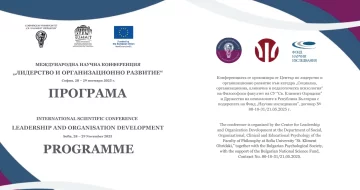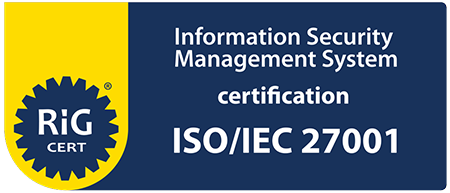As we start the new year, we continue to explore the trends that will determine the course of Human Resources management in 2024.
The first part of this article included five of the ten top guidelines for human resource development. You can read about them here: (Part I)
This article goes into the second part of our forecast, focusing on the remaining 5 HR trends for 2024.
6. HR Meets PR
The experiences of employees are increasingly becoming available to the general public.
From layoffs getting 10 million views TikTok live, and companies like Zoom, JP Morgan, and Goldman Sachs trying to convince employees to return to the office, to employees sharing their onboarding package online, HR departments no longer work behind the scenes but operate in full view of the world.
Dissatisfaction with the internal policies of companies is shared online more than ever.
At Google, workers protested layoffs in New York, California, London and Zurich, fought union busting, and the company attempted to cancel a planned drag show. All this happened within the span of five months.
These stories often get media attention stripped of context or the exact way the information was communicated internally. Despite these informational gaps, distorted reports such as these significantly affect public opinion.
As HR face more moral and ethical issues, Human Resources have to team up with marketing departments to create a public relations (PR) strategy to protect and nurture the company's public image.
Employees are increasingly proactive and feel more comfortable sharing sensitive information publicly rather than using internal company channels to voice their concerns.
Objective: Increasing importance of human resources in managing the public relations aspect
HR in Action: Delivering on the employee promise
III. Human resources as a driver for positive change
The US labor market, for example, has gotten extremely competitive, with the toughest economical conditions since World War II. HR has to take on a leadership role, driving change to benefit both organizations and their employees. In 2024, HR will be the main force behind positive changes at the workplace.
One of these changes is the arrival of generative artificial intelligence. While it increases productivity and improves company bottom lines, it’s also changing the way we approach work and derive meaning from what we do.
Certainly, not every job can be equally satisfying to every person, but our goal should be to strive to create jobs that are meaningful.
This change gives HR a unique opportunity to drive business results through better employee practices.
Here, there is a shift from intense competition in the external talent market to a focus on internal opportunities, with an emphasis on career growth and advancement.
Organizations are expected to accommodate employees in achieving a better work-life balance.
All this promises a hopeful vision for 2024, in which HR reaches business incentives through strategic and thoughtful implementation of HR practices and policies.
HR is positioned to be a catalyst for significant change in the way work is perceived.
The following four HR trends focus on how employees’ outlook on work can be transformed.
7. Evolution of the workforce with the help of AI
The huge advancements in generative artificial intelligence (AI), such as ChatGPT, had a profound impact on the workforce in 2023. As organizations continue to recognize its potential for transformation, most will integrate AI into their operations in 2024.
The boundaries between human activity and machine functions are blurring, which creates the need for a holistic approach to integrating artificial intelligence into the workforce. This will become critical to sustainable business growth.
Goal: Improved performance
HR in action: Emphasis on promoting and developing employee confidence in the use of technology in the workplace by leading by example
8. Rethinking the relationship between work and personal life
The pandemic put pressure on the already strained relationship most had with work, exposing the stress and imbalance in our professional lives.
Beyond the "Great Resignation" (in which 47 million workers voluntarily quit their jobs in 2022), there was also “quiet quitting”, “lying flat”, “lazy girl jobs”, and bai lan. Bai lan is a Chinese phrase with the literal translation of “let it rot”, used to describe the voluntary retreat from pursuing a goal once one realizes it’s too far out of reach. The popularization of such terms points to a concerning trend in the way people see work, their professional careers, and the organizations they work for.
This problem is exacerbated by the way organizations approach and manage work. There is a growing desire for change in the workplace.
Most employees who took part in a pilot project for a four-day working week say they do not want to go back to the old way of working, and 15% are confident that "no amount of money" would persuade them to return to a five-day work week.
Employee work dissatisfaction is growing and organizations are failing to address with the core of the problem.
Purpose: Different people, different needs
HR in action: Balancing flexibility, expectations and legal aspects
- The end of bullshit jobs
A decade ago, David Graeber talked about socially useless, and therefore - in his words – bullshit jobs.
According to a recent survey, 37% of working British adults believe that their work does not make a meaningful contribution to the world. A larger survey covering 47 countries found that 17% of workers doubted the usefulness of their work. Another survey in the US had similar results, with 19% of respondents considering their work socially useless.
In addition, the development of technology has an impact on job content and skills needed to perform successfully.
With 83 million jobs projected to be lost and 69 million to be created, designing positions that align with employee strengths becomes critical to maintaining a competitive edge in an evolving marketplace.
Goal: Better jobs equal better results
HR in Action: Tailoring positions to people
10. From talent acquisition to nurturing potential from within
In today's highly competitive job market, there is a noticeable shift away from simply acquiring talent to a focus on internal career development and promotion within the organization. This shift implies a strategic emphasis on developing existing employees rather than relying solely on external recruitment.
Attempts to overcome talent shortages by competing for external talent leave organizations at the mercy of the labor market.
In 2024, adopting a proactive and sustainable approach to creating internal mobility will be crucial. The focus will be on nurturing talent and creating opportunities for employees to build skills that the organization needs.
That's not to say that attracting talent isn't important—in fact, providing broader opportunities and resources could improve talent acquisition as well, because workers look for more than just an attractive salary.
According to Gallup, the top things Millennials (those born between 1981 and 1996) look for when applying for a job are:
- learning and development opportunities,
- interest in the type of work and
- opportunities for advancement.
Organizations are aware of these trends, with 48% identifying improving advancement opportunities and fostering talent as key business practices to increase talent availability, making this trend one of the most important in HR for 2024.
Objective: Talent strategies are changing
HR in action: Supporting and promoting internal mobility
The Future of HR
2024 is shaping up to be a transformational year for HR, with its influence extending beyond the traditional scope of the role.
As these 10 trends evolve, HR will not only address organizations’ immediate needs, but also lay the foundation for a sustainable future. HR professionals will need to balance the growing expectation and needs of employees with organizations’ goals.
Embracing the changing times will enable HR to create a work environment where employees thrive and businesses achieve their goals. Although the challenge is enormous, the potential benefits for organizations, employees, and society are great.
The combination of innovation and strategic thinking that HR brings will drive growth, inclusion, and sustainability. Taking on this expanded role, HR can guide organizations toward new heights.




